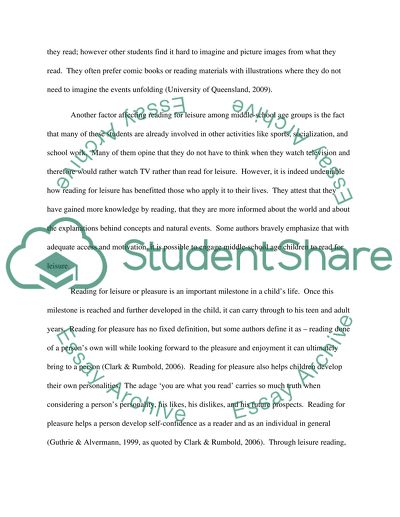Cite this document
(Strategies for Encouraging Reading for Leisure Research Paper, n.d.)
Strategies for Encouraging Reading for Leisure Research Paper. Retrieved from https://studentshare.org/education/1555591-strategies-for-encouraging-reading-for-leisure-a-plan-for-middle-years-of-schooling-age-group
Strategies for Encouraging Reading for Leisure Research Paper. Retrieved from https://studentshare.org/education/1555591-strategies-for-encouraging-reading-for-leisure-a-plan-for-middle-years-of-schooling-age-group
(Strategies for Encouraging Reading for Leisure Research Paper)
Strategies for Encouraging Reading for Leisure Research Paper. https://studentshare.org/education/1555591-strategies-for-encouraging-reading-for-leisure-a-plan-for-middle-years-of-schooling-age-group.
Strategies for Encouraging Reading for Leisure Research Paper. https://studentshare.org/education/1555591-strategies-for-encouraging-reading-for-leisure-a-plan-for-middle-years-of-schooling-age-group.
“Strategies for Encouraging Reading for Leisure Research Paper”, n.d. https://studentshare.org/education/1555591-strategies-for-encouraging-reading-for-leisure-a-plan-for-middle-years-of-schooling-age-group.


